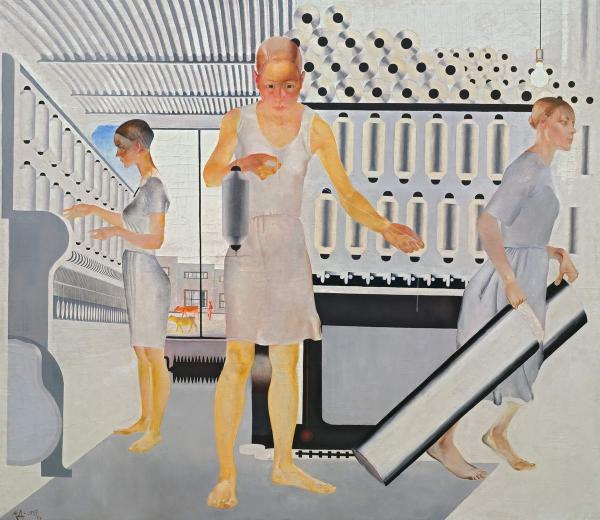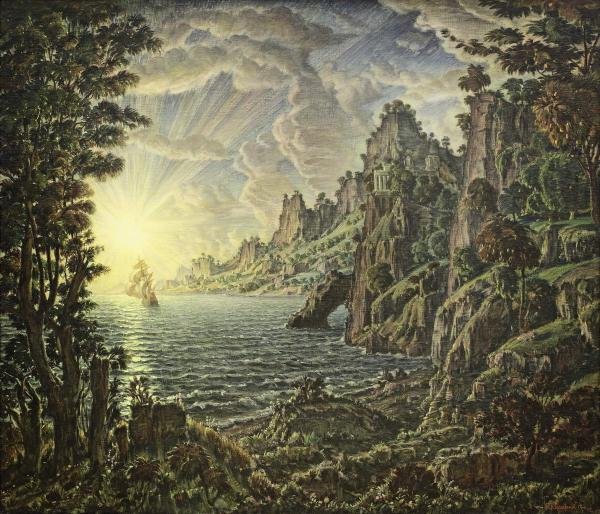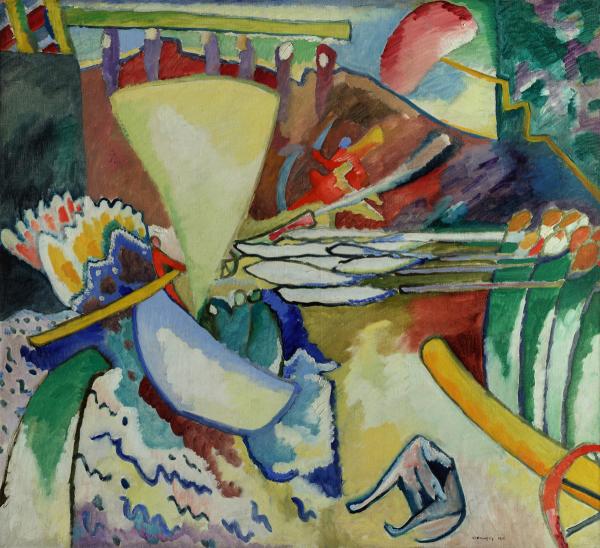The artist is Deineka

Painting "Textilers" was the result of Dyneki’s trip on the instructions of the magazine "Atheist", with whom the artist collaborated. At the same time, he was one of the leaders of the Sastrication Society, where the development of a method of synthetic reflection of reality was conducted.
The fact that life has changed, the time of other heroes has come, everyone agreed – and the creators of the radical avant -garde, and the followers of the figurative line. “You can’t now in the pose of the merchant or manufacturer,” says Alexander Deineka, “to write our drummer. He has another and the artist must see this and be able to show it ". "Life nominated a new – primarily a new, socialist person, new youth, Komsomol members, Rabfakovites". “And this is precisely this new time,” said young artists, “must be drawn to the canvas.”. Daineki “textiles”-women workers, along with men managing huge mechanism machines, become such characters.
In the picture, the artist applies the principle of mounting composition characteristic of photography and cinema. He wrote: “I was fond of lace of factory structures, but they are only background. I always portrayed a person in a large plan, in strong typical movements. ". The figures of weavers are solved in the contrast of scale, volume and color, they seem to be opposed to the background. Depicted in complex angles, volumetric figures stand out against the background of a graphically clear pattern of parts of factory equipment, which gives the composition a special dynamics. The dominant major intonations dominated in the picture give a new awareness of not only the external circumstances of labor, but also his psychology, its spiritual meaning. The main one here is a sense of freedom and dignity.
The artist surprisingly sensitively felt the pulse of time and reflected it in his canvases. He masterfully builds a composition in adjacent multi-time plans, the rhythms of working weaving machines are combined into a kind of ornamental space, an almost monochrome silver-white color gives the picture the clarity and graphic of the author’s plastic manner, which acquires a journalistic pointlessness and persuasiveness.
+ About the restoration of the work
– Hide the text about restoration
The state of safety before restoration:
The picture is written on a thin canvas, the tension of the canvas weakened. Due to the case of casein glue contained in the author’s soil and different thicknesses and loads of the colorful layer on the surface, a diverse hard craquelure was formed, with the retractions of the canvas from the back. Krakelyur and fractures are most developed in areas of painting of white and gray, there were hard, raised edges, in some places with the threat of a screech. The picturesque surface looked dull and contaminated.
Traces of previous restorations are noticeable along the entire surface: a large restored breakthrough of the base of a complex shape with deformation along the line of connection of the edges; multi -time mastications that do not correspond to the level of the author’s layer; Toning, executed in various techniques in different periods, changed in color and darkened.
Complex of the events:
During the conservation process, the picture was removed from the subframe and taken to stretch on a sliding working subframe. Old restoration edges and pollution are removed from the back.
Strengthening the colorful layer and soil with a pair and laying of hard craquelure and fractures are made using the methodology of simultaneous tuning of the author’s canvas. In the process of strengthening, the picture was repeatedly pulled on a working subframe and was pressed for a long time.
The old seal by breaking the canvas was removed, the breakthrough was repressed, its joint was strengthened by modern restoration materials.
Duplication of new restoration edges was performed.
A special "tablet" subframe is made for the picture. Student pollution are removed from the surface of the colorful layer. Restoration soil is brought to the loss of the loss. Old, changed in color restoration tinting are removed. The surface of the painting is covered with a protective layer of matte varnish.
Toning the loss of a colorful layer is made by special restoration colors.
Keeping a story. Restoration workshop of the Russian Museum – 100 years. SPb, 2022. With. 144-145.


